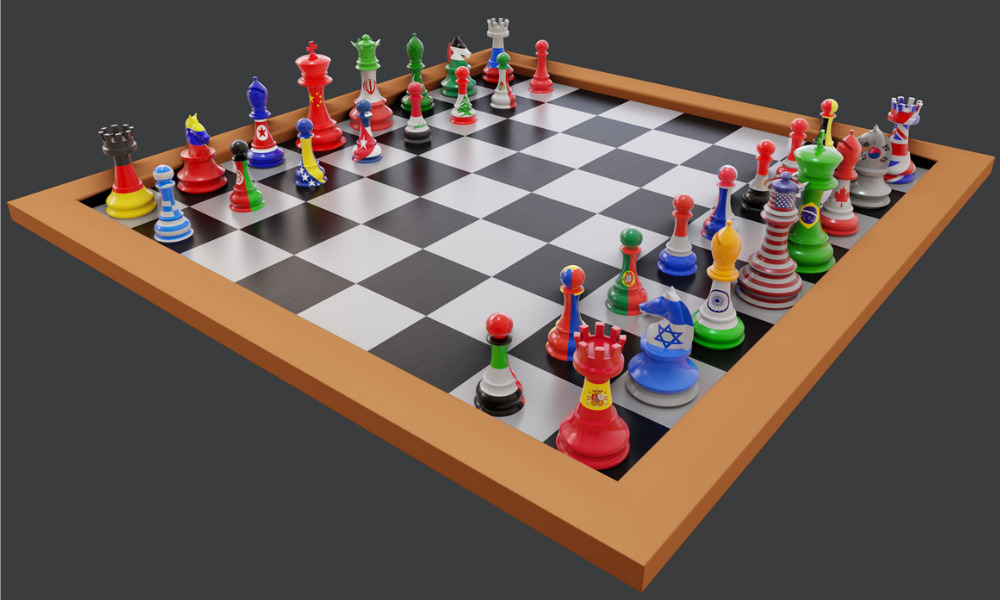Russia-Ukraine fallout has pushed fixed-income investors to distinguish between winners and losers

For a long time, investors in North America have been able to use passive single-ticket solutions to get emerging market exposure in their portfolios. But the effects of the pandemic and, more recently, Russia’s war on Ukraine have strained the global supply chain – and certain developing countries are looking more like weak links.
“There certainly are countries that are under duress and have a problem. And broadly, I do think EM countries are having more of a challenge coming out of COVID in terms of their response and trying to get vaccine levels up,” said Dec Mullarkey, Managing Director, Investment Strategy and Asset Allocation at SLC Management. “But I think the markets are differentiating between the winners and losers in EM.”
According to Mullarkey, sovereign debt is a useful indicator of what’s happening in emerging markets. A look at the different stories developing in investment-grade and high-yield debt, he says, reveals a stark difference.
“In a lot of cases, particularly in the US, investors have sometimes just broadly treated EM as just a monolithic asset classes that they either allocate to or not,” he says. “I think we’ve seen a greater level of maturity over the past several years where investors are more directed than that.
Looking at spreads in investment-grade sovereign EM debt compared to IG corporate U.S. debt, Mullarkey says hard currency EM sovereigns – those that are denominated in U.S. dollars – traded at around 20 basis points above U.S. investment-grade corporate bonds at the start of the year, which was within the normal range of expectations.
During Russia’s invasion of Ukraine, he said there was a one- or two-week period when emerging-market sovereign debt really “gapped out” relative to U.S. corporates. But now, risk sentiment appears to have settled, with IG sovereigns from certain countries in the Middle East, Europe, Southeast Asia, and South America now trading within a tighter range of seven basis points over U.S. corporates.
“High-yield sovereigns are a different bucket entirely. Those are showing all of these current geopolitical risks, and I think concerns around how some of these countries would emerge from all this,” Mullarkey says. “There will definitely be some countries that are going to struggle here in the recovery.”
The conflict in Ukraine, according to Mullarkey, has exposed national security and energy security as two key fault lines along which EM winners and losers may be divided. After seeing the repercussions of sanctions on Russia, countries are prone to start aligning and fortifying trade relationships with existing allies, while distancing themselves from countries that could be caught up in geopolitical and economic tensions.
“That’s been clearly reflected in the equity performance of European EM countries, which have taken a hit because of their proximity to the ongoing conflict,” Mullarkey says. “Similarly, many developing countries in Asia are struggling because of concerns around China’s future growth.”
The positive upshot for EM countries, he says, will be a greater desire among advanced nations to include energy- or commodity-producing nations as trade partners. South American equities, he says, have been on fire lately as the likes of Chile, Peru, Brazil, and Colombia benefit from a potential reshaping of the global order.
“I think the Western alliance, if you want to call it that, is going to look to partner with the big energy producers,” he says. “They may even look to diversify away from China, which is a trend I’ve seen happening over the last little while. So whichever EM nations they end up diversifying into will benefit from that same game.”
Fixed-income investors, Mullarkey suggests, would do well to stay up in high-quality, hard currency bonds from countries with sound metrics and solid dollar reserves. Aside from Latin American countries, he says there’s a fair number of developing countries to choose from including South Korea, the Philippines, Saudi Arabia, Vietnam, Poland, and Romania.
“I would say you can't be an index investor in EM today. You actually have to very much select individual countries, and proceed in that way,” he says. “High-yield EM is a tough nut to crack right now, but I do think there's interesting opportunities to be discovered in investment-grade sovereign EM debt.”



